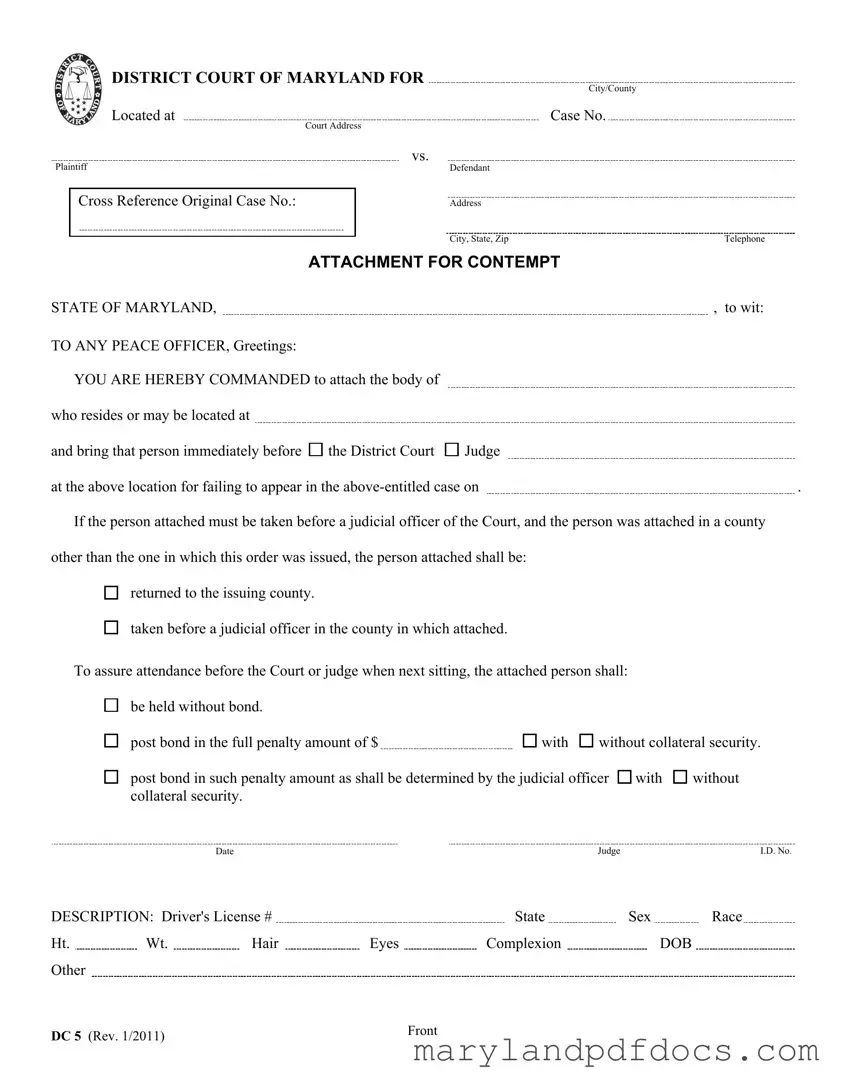What is the DC 5 Maryland form used for?
The DC 5 Maryland form is an official document used by the District Court of Maryland to request the attachment of a person who has failed to appear in court. This form is particularly relevant in cases of contempt, where an individual may be held accountable for not following a court order or failing to attend a scheduled court hearing.
Who can issue a DC 5 form?
A judge or a court official can issue the DC 5 form. This authority is typically exercised when there is a need to ensure that a person appears in court for a legal proceeding. The form serves as a command for law enforcement to take action in bringing the individual before the court.
What information is required on the DC 5 form?
Several key details must be included on the DC 5 form. This includes the names of the plaintiff and defendant, the case number, and the court address. Additionally, it requires information about the individual being attached, such as their address, physical description, and any relevant identifiers like a driver's license number.
What happens if a person is attached under the DC 5 form?
If a person is attached under the DC 5 form, law enforcement will take them into custody and bring them before a judge. Depending on the circumstances, the individual may be held without bond or may be required to post bond to secure their release. The specifics will be determined by the judicial officer overseeing the case.
Can the DC 5 form be used in any county in Maryland?
Yes, the DC 5 form can be used in any county in Maryland. However, if a person is attached in a different county from where the order was issued, they must either be returned to the issuing county or taken before a judicial officer in the county where they were attached. This ensures that the legal process is followed correctly.
What is the role of a peace officer in the DC 5 process?
A peace officer plays a crucial role in executing the DC 5 form. They are responsible for locating the individual named in the form, taking them into custody, and ensuring they are brought before the court. The officer must also complete a Return of Service section on the form, certifying that the attachment was carried out properly.
What should I do if I receive a DC 5 form?
If you receive a DC 5 form, it is important to take it seriously. It indicates that you are required to appear in court. Ignoring the form can lead to further legal consequences, including potential arrest. It’s advisable to consult with a legal professional to understand your rights and obligations regarding the court appearance.
How can I find more information about the DC 5 form?
For more information about the DC 5 form, you can visit the official website of the Maryland District Court. Additionally, speaking with a legal professional can provide clarity on how the form works and what steps you may need to take if you are involved in a case requiring this document.


